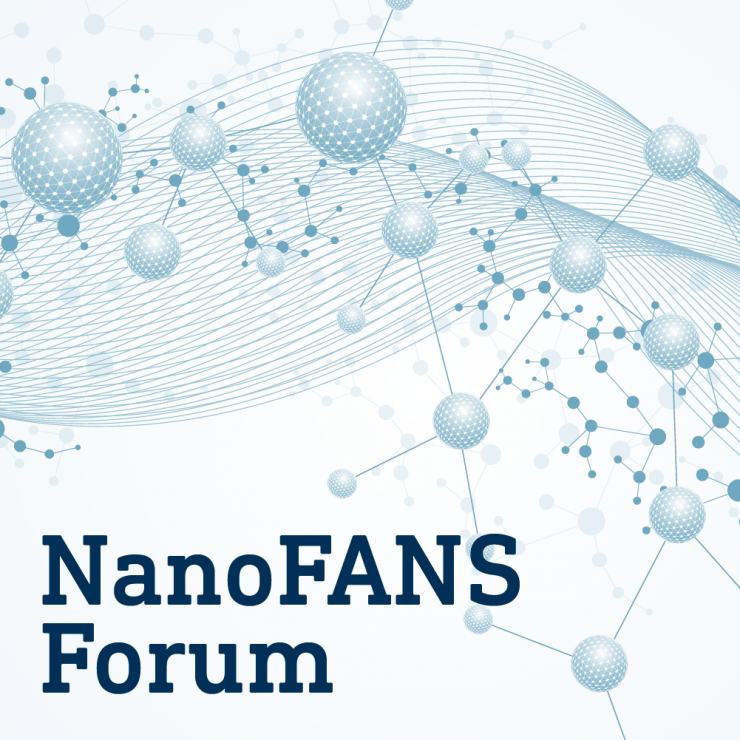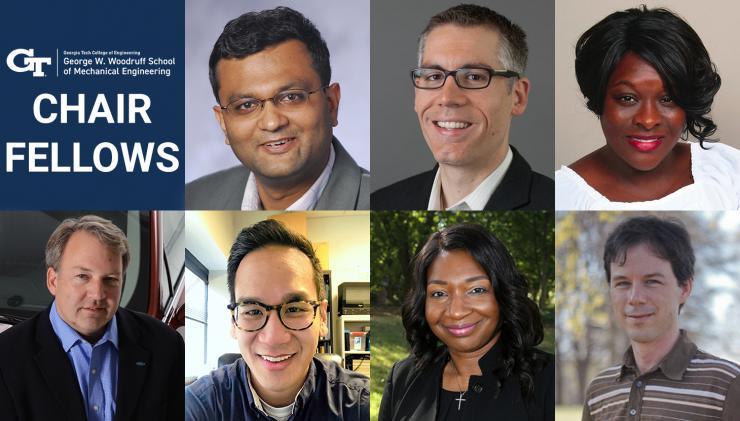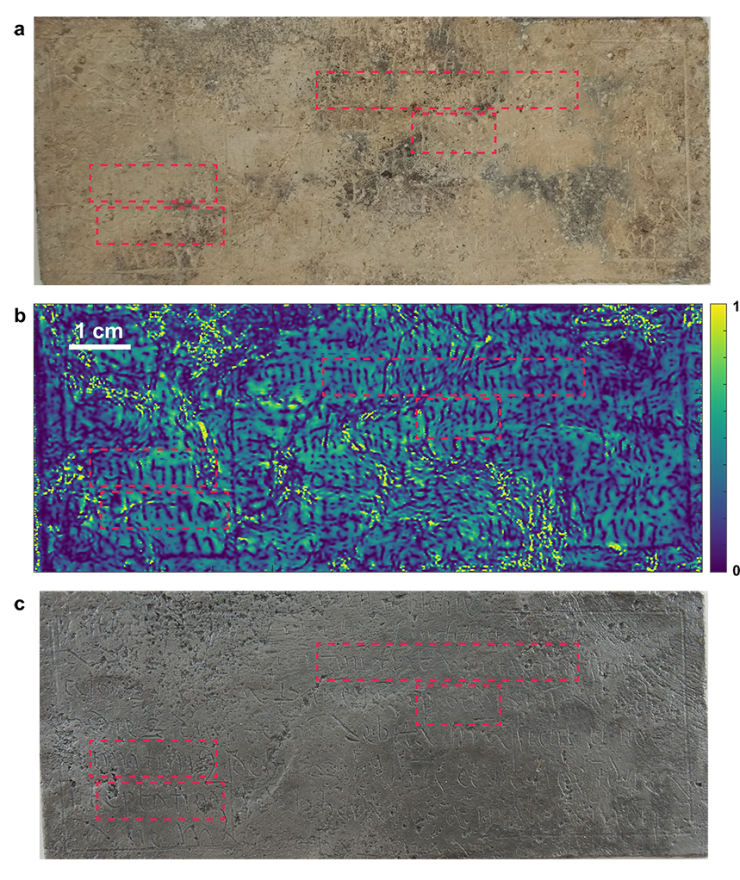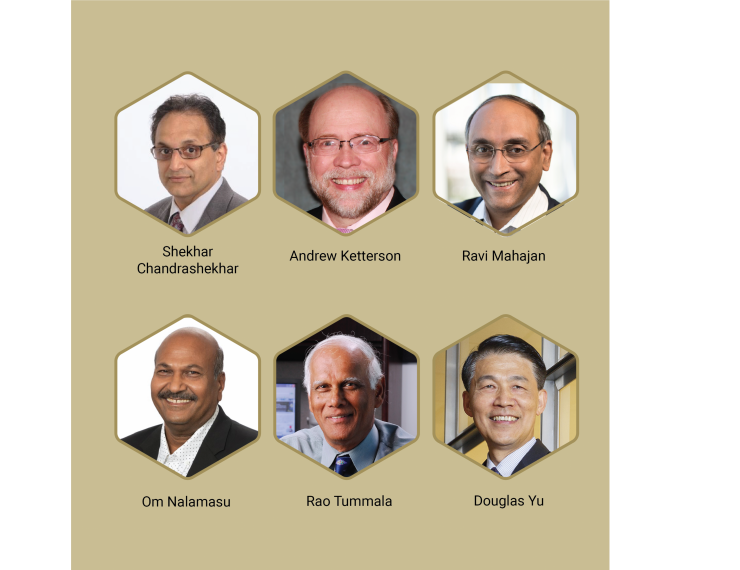IEN’s NanoFANS Forum Celebrates 25th Symposium
Apr 29, 2022 — Atlanta, GA

The NanoFANS (Focusing on Advanced Nanobio Systems) Forum is a semiannual symposium supported by the Institute for Electronics and Nanotechnology (IEN) at Georgia Tech that began in 2008. It features topics at the intersection of the life sciences and nanotechnology, and connects the medical, life sciences, biology, nanotechnology, and engineering communities. The goal of the NanoFANS Forum is to engage researchers in the biomedical and life sciences areas and to educate them on the benefits of micro-/nanotechnology and how it can advance their research.
Since the beginning, NanoFANS has been attended by more than 2,500 participants, both on- and off-campus, from academia, industry, and government organizations. To date, IEN has hosted 24 events and featured about 80 Georgia Tech / Emory faculty (and one off-campus faculty from Clemson).
The 25th NanoFANS forum is on Tuesday, May 24th, and will focus on “Micro- and Nanotechnology Commercialization: Opportunities and Challenges.” Technology commercialization is the process of transitioning technologies from the research lab to the marketplace, and it complements the process of publishing research findings. Innovations in micro- and nanotechnology are revolutionizing manufacturing and production and creating new materials and products through novel processes for commercial applications. In many cases, there is also a significant benefit to society.
IEN’s 25th NanoFANS forum will explore the opportunities and challenges of commercializing innovations in micro- / nanotechnology in the bio- space. Speakers will include Professor Todd Sulchek from the Woodruff School of Mechanical Engineering at Georgia Tech; Professor Farrokh Ayazi from the School of Electrical and Computer Engineer at Georgia Tech, Regents Professor Mark Prausnitz from the School of Chemical and Biomolecular Engineering at Georgia Tech, and Mason Chilmonczyk, CEO of Andson Biotech. They will discuss their innovations and commercialization experience as founders and co-founders of their start-ups.
Please register for the NanoFANS Forum by May 20, 2022. Lunch will be provided
After the talks, an optional tour of the state-of-the-art IEN Cleanrooms and labs will be available for interested participants. Please let us know if you are interested in taking a tour.
For more information on the NanoFANS Forum, please contact:
Paul J. Joseph, Ph.D., MBA
Principal Research Scientist
Georgia Tech Institute for Electronics and Nanotechnology
Spring 2022 IEN Microfabrication Short Course
The Institute for Electronics and Nanotechnology (IEN) at Georgia Tech will offer a short course on microfabrication from May 25th - 27th, 2022. This intensive three-day short course combines classroom lectures and laboratory based hands-on fabrication in the IEN cleanroom. The goal of the course is to impart a basic understanding of the science and technology of microfabrication processes as used in academia and industry.
PRC Distinguished Lecture Seminar | Directions in III-N Devices for Wireless Communications and Beyond
Featuring Professor Patrick Fay, Department of Electrical Engineering, University of Notre Dame
Bio LaunchPad Symposium
"Navigating the Early Stages of Biotech Commercialization"
Featuring:
Daria Mochly-Rosen, Ph.D.
George D. Smith Professor in Translational Medicine
Stanford University
A two-day meeting delivering the basics of biomedical translational and commercialization work though the inspiring story of Daria Mochley-Rosen, Ph.D., founder of Stanford’s SPARK program.
Woodruff School of Mechanical Engineering Select Chair Fellows
Apr 25, 2022 — Atlanta, GA

With the ultimate goal of promoting excellence in teaching and an inclusive and collegial culture where great research ideas beyond the standard-sponsored ones can be realized, the Woodruff School has established three two-year “Chair Fellow” positions in Excellence in Education and Innovation, Entrepreneurship, and Diversity, Equity, and Inclusion. All Chair Fellows will receive discretionary support of up to $25k per year.
Congratulations to the first cohort of Chair Fellows.
Excellence in Education and Innovation:
- Chaitanya Deo- Developing python-based tool for temporally assessing student success in the Woodruff School programs to build on current practices of ABET assessment with the goal of increasing the 4-year graduation rate.
- Christopher Saldaña- Plans to develop and pilot both VR- based and AR- based applications within the design and build sequence in the Woodruff School with a focus on ME3210 and ME2110.
Entrepreneurship:
- Craig Forest- Develop entrepreneurship modules for undergraduate courses, improve ties between GWW and ATDC and CREATE-X, support faculty patents and startups.
- Mike Tinskey- Develop business-related engineering curriculum, expand mentoring, support intrapreneurship programs.
- Todd Sulchek- Create program to build a community of entrepreneurial faculty who meet and collaborate on a regular basis to enhance startup and licensing activities.
Diversity, Equity, and Inclusion
- Tequila Harris- Conduct a multi-faceted study to elucidate the strengths, weakness, threats and opportunities related to the recruitment and retention, inclusion, and sense of belonging of Black, Hispanic, and Native American female (WOC) faculty across COE.
- Monifa Skelton- Consult with peer institutions to develop best practices for for recruitment and retention of diverse students and staff while also enhancing DEI community engagement and relationships with HBCUs and minority serving institutions.
Terahertz Imaging Reveals Hidden Inscription on Early Modern Funerary Cross
Apr 25, 2022 — Atlanta, GA
Georgia Tech professor David Citrin (right) and adjunct professor Alexandre Locquet stand in front of an image of the 16th-century funerary cross used in their study. Credit: Nicolas Jacquet
In a multidisciplinary project, researchers at the Georgia Institute of Technology and Georgia Tech-Lorraine used terahertz imaging and signal processing techniques to look beneath the corroded surface of a 16th-century lead funerary cross. Led by David Citrin, a professor in the School of Electrical and Computer Engineering (ECE), the effort brought together imaging scientists, a chemist specializing in archaeological objects, and an art historian to reveal a message that had been obscured by time: an inscription of the Lord’s Prayer.
“Our approach enabled us to read a text that was hidden beneath corrosion, perhaps for hundreds of years,” said Alexandre Locquet, an adjunct professor in ECE and researcher at Georgia Tech-CNRS IRL 2958, a joint international research laboratory at the Georgia Tech-Lorraine campus in Metz, France. “Clearly, approaches that access such information without damaging the object are of great interest to archaeologists.”
The study was reported March 2 in the journal Scientific Reports.
The cross, cut from a sheet of lead, was found in a burial plot at an abbey in Remiremont, France — a couple hours drive from the Georgia Tech-Lorraine campus. Known as a croix d’absolution, it is a type of funerary cross that dates to the Middle Ages and has been found at sites in France, Germany, and England.
“This type of cross typically bears inscriptions of prayers or information about the deceased,” said Aurélien Vacheret, director of the Musée Charles-de-Bruyères in Remiremont and co-author on the study. “It is thought their purpose was to seek a person’s absolution from sin, facilitating their passage to heaven.”
The museum loaned the cross to Citrin’s lab in hopes that the team could use imaging techniques to make the invisible visible. Citrin and his group specialize in non-destructive evaluation and develop techniques that allow for detailed examination of an object’s hidden layers without changing or damaging its original form. Although their work often has industrial applications, such as detecting damage to airplane fuselages, the group embraced the opportunity to inspect the cross – a chance to further explore their technology’s applications for archaeological purposes.
Peeking Beneath the Veil of Corrosion
The team used a commercial terahertz scanner to examine the cross every 500 microns (about every half a millimeter) across the object. First, the scanner sent short pulses of terahertz electromagnetic radiation — a form of light that travels on tiny wavelengths — over each section of the cross. Some waves bounced back from the layer of corrosion, while others penetrated through the corrosion, reflecting from the actual surface of the lead cross. This produced two distinct echoes of the same original pulse.
Next, the team used an algorithm to process the time delay between the two echoes into a signal with two peaks. This data revealed how thick the corrosion was in each scanned point. The measurements of the light beams that reflected from the underlying metal were then collected to form images of the lead surface below the corrosion.
Interdisciplinary Insights
Although crucial data was gathered during the scanning process, the raw images were too noisy and jumbled and the inscription remained illegible at the time. But Junliang Dong, then a Ph.D. student in Citrin’s lab, had the insight to process the images in a special way to eliminate the noise. By subtracting and piecing together parts of the images acquired in different frequencies, Dong was able to restore and enhance the images. What was left was a surprisingly readable image containing the text.
Using the processed images, Vacheret was able to identify multiple Latin words and phrases. He determined they were all part of the Pater Noster, commonly known as the Our Father or the Lord’s Prayer.
The team also worked with a conservationist to chemically reverse the corrosion on the cross, confirming the Pater Noster inscription. Comparing their images to the clean cross, the team found their images had revealed parts of the inscription not observable on the original cross. By uncovering additional aspects of the inscriptions that were previously undocumented, their work was able to offer deeper understanding of the cross and further insight into 16th-century Christianity in Lorraine, France.
“In this case, we were able to check our work afterwards, but not all lead objects can be treated this way,” Citrin said. “Some objects are large, some must remain in situ, and some are just too delicate. We hope our work opens up the study of other lead objects that might also yield secrets lying underneath corrosion.”
Citrin’s group has also used terahertz imaging to look beneath the surface of 17th-century paintings, elucidating paint layer structure and providing insights into techniques of master painters. They are currently investigating surface coatings on ancient Roman ceramics.
The cross project illustrates that success requires more than just accurate measurement, but also careful data processing and collaboration between researchers from disparate fields. The team’s approach opens new perspectives for terahertz imaging analysis and could produce great boosts for the fields of digital acquisitions and documentation, as well as character recognition, extraction, and classification.
“Despite three decades of intense development, terahertz imaging is still a rapidly developing field,” said Locquet. “While others focus on developing the hardware, our efforts concentrate on making the most of the data that is measured.”
Citation: Junliang Dong, Ana Ribeiro, Aurélien Vacheret, Alexandre Locquet, and D. S. Citrin, “Revealing inscriptions obscured by time on an early-modern lead funerary cross using terahertz multispectral imaging,” Scientific Reports (March 2, 2022).
DOI: https://doi.org/10.1038/s41598-022-06982-2
Funding: This work was funded by the Fonds Européen de Développement Régional (FEDER) from the Conseil Régional du Grand Est, as well as the Institut Carnot ARTS.
About Georgia Tech
The Georgia Institute of Technology, or Georgia Tech, is a top 10 public research university developing leaders who advance technology and improve the human condition. The Institute offers business, computing, design, engineering, liberal arts, and sciences degrees. Its nearly 44,000 students, representing 50 states and 149 countries, study at the main campus in Atlanta, at campuses in France and China, and through distance and online learning. As a leading technological university, Georgia Tech is an engine of economic development for Georgia, the Southeast, and the nation, conducting more than $1 billion in research annually for government, industry, and society.

Comparison of the inscription on (a) the original cross before corrosion removal, (b) the final terahertz image after post-processing, and (c) the cross after corrosion removal.
Catherine Barzler, Senior Research Writer/Editor
Georgia Tech Quantum Alliance Workshop
Program
9:00 a.m. - 9:15 a.m. - Welcome Martin Mourigal and Alexa Harter
9:15 a.m. - 9:40 a.m. - Colin Parker (Physics) Invited Talk
9:40 a.m. - 10:05 a.m. - Ali Adibi (ECE) Invited Talk
10:05 a.m. - 10:30 a.m. - Coffee Break
10:30 a.m. - 11:30 a.m. - Student Session I
NanoFANS Forum | Bridging Biology and Nanotechnology
Program
11:10 a.m. - 11:50 a.m. - “Commercialization of microfluidic technologies to enable manufacturing of safer, more precise, more cost-effective cell therapies”
Todd Sulchek, Professor of Mechanical Engineering at Georgia Tech
Georgia Tech Packaging Research Center Launches Industry Advisory Board
Apr 18, 2022 — Atlanta, GA

The Georgia Tech 3D Systems Packaging Research Center (PRC) – the largest and most comprehensive microsystems packaging research, education, and industry collaboration center in the world – has formed its first Industry Advisory Board. The board will consist of global leaders in electronics manufacturing and packaging who will work closely with PRC Director Madhavan Swaminathan to expand the Center’s reach and collaborations.
“The PRC is in a unique position as semiconductor packaging takes center stage to continue Moore's law,” said Swaminathan, who is also the John Pippin Chair in Microsystems Packaging in the School of Electrical and Computer Engineering and Materials Science and Engineering at Georgia Tech. “The members of the advisory board are trail blazers in electronic packaging, and their collective experience and wisdom will help us strategize on future technologies and activities at the PRC. With their help, we expect to increase our reach around the world.”
Inaugural members of the PRC Industry Advisory Board include Shekhar Chandrashekhar, Chief Executive Officer, iNEMI; Andrew Ketterson, Research Fellow, Qorvo; Ravi Mahajan, Intel Fellow, Assembly and Test Technology Pathfinding, Intel; Omkaram Nalamasu, Senior Vice President and Chief Technology Officer Applied Materials, Inc., and President, Applied Ventures, LLC; Georgia Tech Professor Rao Tummala, former PRC Director and Professor Emeritus, and Douglas Yu, TSMC Distinguished Fellow and Vice President, Pathfinding for System Integration, Taiwan Semiconductor Manufacturing Co.
The initial mission of the Advisory Board will include the following:
- Recommending emerging applications that drive important metrics for packaging.
- Assessing current PRC technologies and identifying areas not covered.
- Suggesting important relationships that PRC needs to develop and enabling them.
- Recommending new emerging opportunities.
The PRC is a graduated National Science Foundation Engineering Research Center focused on advanced packaging and system integration leading to System on Package technologies. The Center conducts research, supports education, and is building the workforce of the future in all aspects of packaging, including design, materials, process, assembly, reliability, thermal management, and systems integration driven by emerging applications. The emerging applications currently include high-performance computing, automotive, healthcare, and broad band wireless. The PRC team consists of 29 faculty from five schools, 11 research/administrative staff, more than 60 graduate/undergraduate students, and several visiting engineers. The PRC currently collaborates with 48 industry and government organizations, and 14 universities.
Learn more about the PRC at prc.gatech.edu.
Follow PRC on LinkedIn at https://www.linkedin.com/company/gt-prc.
Georgia Tech to Help Define Future of Microelectronics Industry
Apr 07, 2022 — Atlanta, GA

Georgia Institute of Technology has been selected as a key collaborator in producing a roadmap for the future of advanced packaging for next generation microelectronics.
The U.S. Department of Commerce’s National Institute of Standards and Technology’s (NIST) Office of Advance Manufacturing has selected Semiconductor Research Corporation (SRC) to define, through broad community engagement, the future technical goals of the microelectronics industry and determine how they will be achieved. In collaboration with SRC, Georgia Tech will play a critical role in the governance of this road mapping effort as well as serve as a lead contributor.
“We are delighted to have Georgia Tech serve as an integral contributor of this effort”, said Madhavan Swaminathan, Executive Director, 3D Systems Packaging Research Center. “Our work will be essential in providing the gateway for regaining U.S. manufacturing leadership in advanced packaging, as we leverage our expertise in 3D Microsystems to enable future heterogeneous information, communication, and other disparate devices integrated into a single system that provides pathways for trusted microelectronics.”
Read the full press release.
